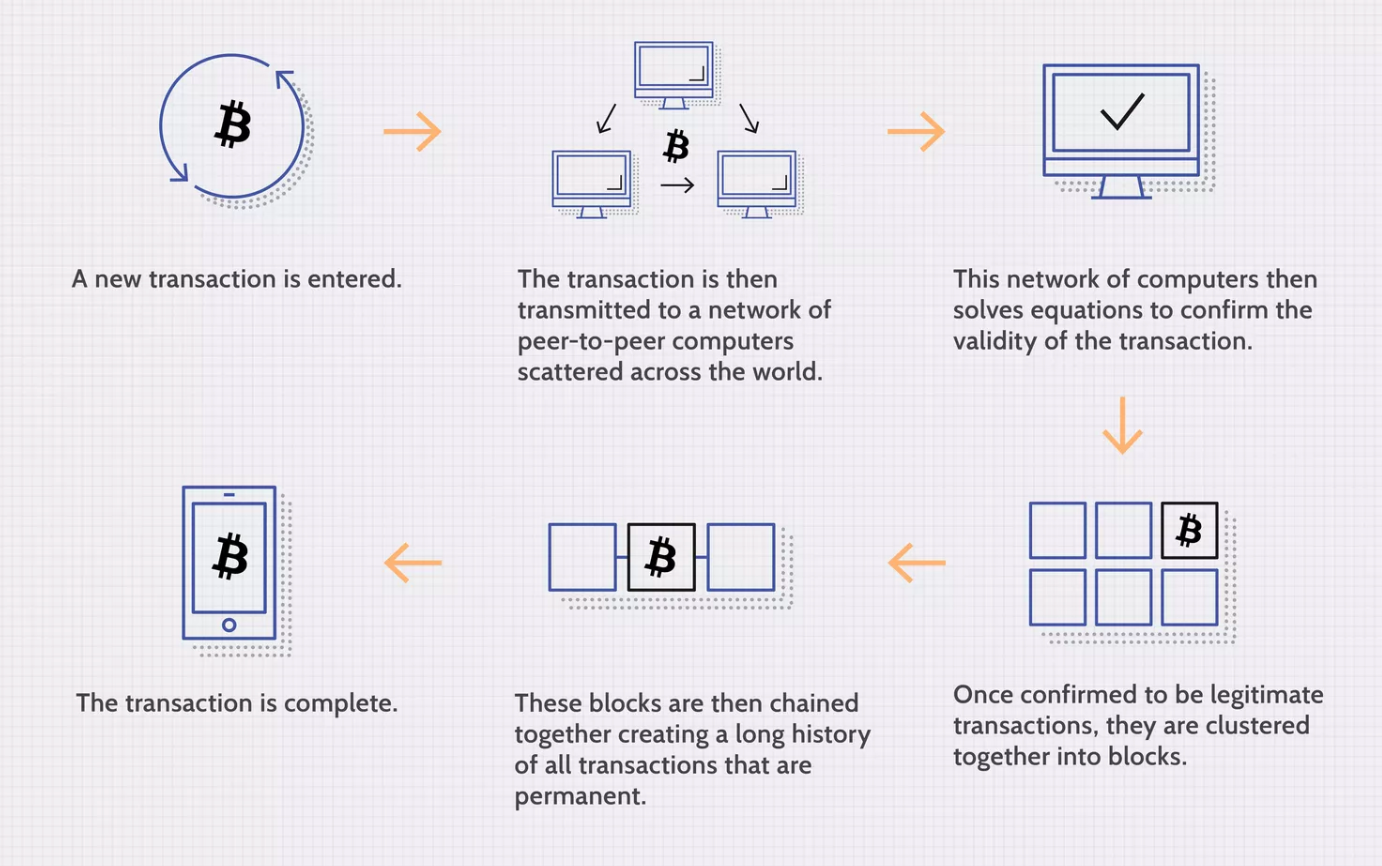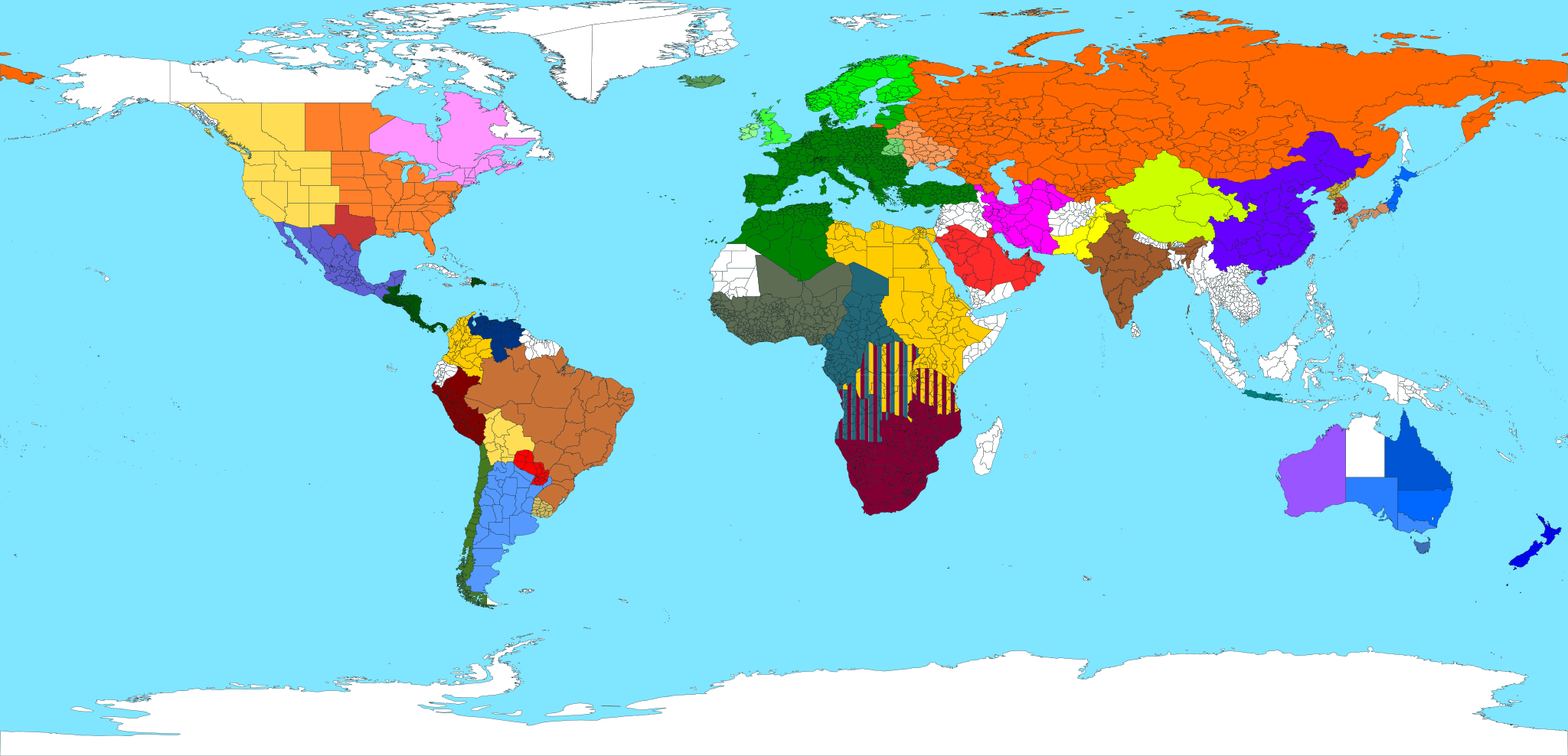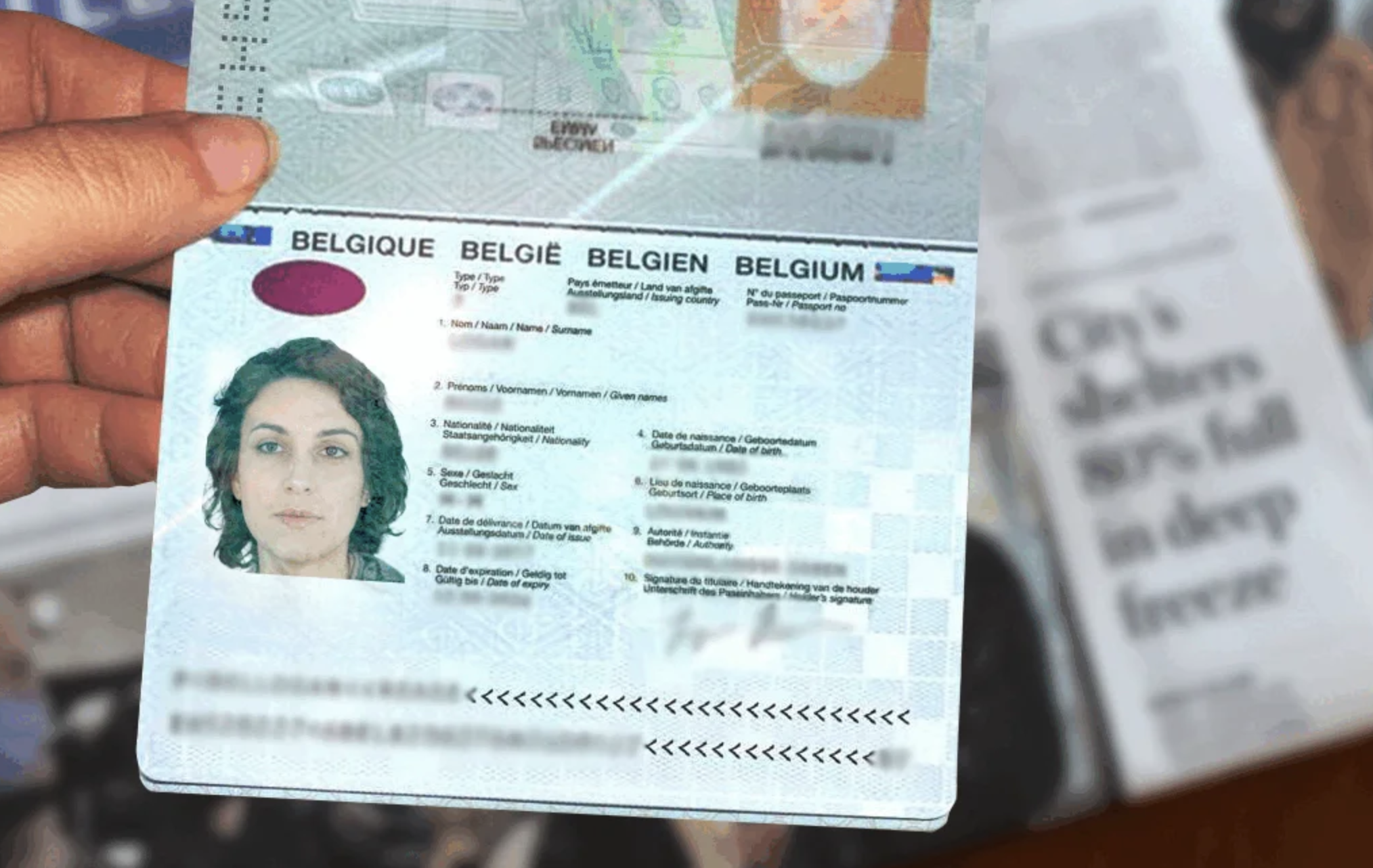Beyond money: 5 alternative uses for blockchain technology
Regular readers of the Invity blog know that we love Bitcoin because it's a revolutionary step forward in money. With a new digital cash based on blockchain technology, Satoshi Nakamoto explicitly aimed to fix problems of trust, accountability, and privacy, which had plagued financial systems for years. But issues with trust and accountability aren't unique to money—could blockchains be a solution in other fields as well? And what about everything connected to blockchains as we know them, things like mining rigs and Bitcoins themselves—could these too be useful in other areas of society? These questions are increasingly being asked around the crypto industry, so Invity is here to show you some of the most exciting Bitcoin use cases floating around.
A blockchain refresher
Before we get too deep into some of the new ways the tech underlying Bitcoin is being applied, it may be worth a quick refresher on how it works in its most familiar form. We've got our detailed blockchain explainer here, but the short version is that blockchains are essentially specialized forms of accounting. Groups of transactions are bundled into blocks, cryptographically hashed, and verified by competing "miners" (which refers to both the specialized computers doing the verification and the people managing the computers) in a system known as proof of work. Once other computers have reached a consensus that the proof is correct—a way to keep the system highly secure—those transactions are approved and their data is unchangeably added to the blockchain; the cycle then repeats.

Done properly, this is a hack-proof, relatively fair way to manage transactions across a decentralized, peer-to-peer network. Some drawbacks, depending on your perspective, can be high energy consumption, potentially slow transaction times, and simply working better at larger scales. What's key, though, is that these transactions don't just need to involve (digital) money changing hands.
Using blockchain in supply chain management
Take, for example, consumer goods. In today's era of globalization more than ever, end consumers of anything from food to clothing to automobiles are often many countries and many months removed from the manufacturing process, and often even more distanced from the raw materials that feed into any complex product. How, then, is an Average Joe supposed to trust that what they're buying in the grocery store is actually what the label claims and is at the quality that one can expect? Here too, the principles of blockchain can be a solution.
Wine is an especially apt case study. Since wines rely heavily on terroir, or being grown and manufactured in one, often very small, region, the logistics of shipping wine from, say, a small town in France to a shop in Miami can be long and complex. Along the way, changes in temperature and other conditions can affect the quality and longevity of the wine—something that was sent out the winery door at peak quality may have deteriorated significantly after passing from truck to ship to warehouse to shelf.
A company called eProvenance counters this with sensors at the container, pallet, and even individual case levels that monitor temperature, humidity, and geolocation. As these wines pass through the logistics chain just as Bitcoin transactions would pass from one person to the next, any evidence of tampering, irregularities, or even just suboptimal storage conditions is recorded on a blockchain. Since it's completely open for anyone to check, the blockchain data will help both producers and consumers make the most informed decisions about what they make and buy.
The same principle can be applied to other luxury items like fine art, where knowing where something comes from and whose hands something has passed through makes all the difference; each painting, for example, could have a unique token that, like a Bitcoin Ordinal, marks out that painting and travels unchangeably with it. Monitoring solutions don't have to be just for luxuries either: the transparent, accountable benefits of blockchain tech is being used to fight child labor, sweatshops, slavery, and other forms of exploitation in the cocoa, mining, fashion, and many other industries.
Using blockchain in energy and sustainability
Industries don't have to deal with physical goods in order to benefit from blockchain either. The energy industry could be one of the biggest winners, especially as the world tries its best to pivot to more sustainable practices. Electricity in particular is almost a perfect fit.
Why? Because electric power mostly works on a synchronous grid system, wherein various regions generate and distribute power not just to each and every home and business in their vicinity, but are also able to send power to faraway parts with higher demand or receive power when a neighbor has extra. In this way, power grids, or interconnections, aren't that much different from peer-to-peer networks like Bitcoin.

Of course, power grids face various challenges. One is determining where electricity should flow and when; these needs fluctuate throughout each day and each season, but can also be affected by more unpredictable issues like extreme weather and other freak occurrences. These decisions are often made with some combination of automated data and human input, and so blackouts can often do occur when there's accidental or intentional mismanagement (anyone remember Enron?).
Further compounding the issue of power management is the rise of renewables, with more people and businesses taking a step away from the grid. By installing solar panels, windmills, or other renewable generators, individuals can slowly begin to upend the energy flows power companies rely on, increasing the risk of mismanagement or waste. What's more, semi-off-grid people can sometimes generate more power than they can use or store. But what to do with this excess—including selling it back to power companies to help ease strain on other forms of energy—has always been a bit of a confusing area to manage consistently and fairly.
Blockchain, of course, can help clear up these inefficiencies and offer a better experience for customers. Smart contracts written into an unchangeable blockchain could automate buying and selling energy based on supply and demand, removing inefficiencies and opportunities for intentional abuse. The same idea could greatly simplify the process of buying and selling energy on a localized basis—if your solar panels generate an excess, you will automatically be compensated by the power company, with no haggling over rates or willingness to do so; this alone could make more renewables more attractives to more people. These could even be operating principles for small, highly local, truly peer-to-peer renewable grids, cutting out monopolistic power companies out of the picture all together.
Better still? A push to renewables—in particular for running the mining rigs that power blockchains on renewable energy—would remove one of the biggest criticisms of Bitcoin: that crypto uses too much energy, even more than some countries. Ramping up blockchain tech and sustainable power hand in hand would pay dividends to both projects.
Using blockchain in insurance
While most of us expect to use electricity every day, blockchain tech is also being applied to industries that most of us hope to use significantly less often, like insurance. Anyone who has had to file an insurance claim knows that it's a hassle to get the payment you deserve—if you get any payment at all. Blockchains and the smart contracts that run on them, however, could be the key to a new and fairer age of insurance.
Let's say you're a farmer. You probably have crop insurance to protect you and your family if this year's harvest fails—say, drought, a flood, or disease decimate what you've planted. Insurance agents have to know you and your property well, measuring it, knowing what you plant, and being aware of the climatic conditions in an accurate way and keeping it all updated from year to year. Should an accident happen, you need to be able to prove that you really did lack rain or there really was a tornado in your area—and insurance companies will always be skeptical of your proof, even using alternative data sources to get out of paying.
But let's say all of this transitions to the blockchain. The dimensions of your fields will be stored from year to year, no one can say they forgot to update the name on your insurance policy, and multiple weather data sources can be fed into the system—all objective, all unchangeable, and all open to both the insurer and the insured. These can automatically determine premiums as well as the real conditions on the ground from year to year and throughout the season. By constantly measuring rainfall in an insured field, for example, smart contracts can then also automatically trigger flood or drought claims, paying farmers even needing to file a claim.
Similar principles have also been piloted in travel insurance—automatic refunds if a flight is delayed, rather than waiting for months—and could find extraordinarily high usage in health and accident insurance, especially if combined with the next possible use case below.
Using blockchain in digital identity
Especially with the rise of generative AI, tech-driven deepfakes and fraud are becoming more common and harder to detect by the day. This, of course, makes verifying one's identity more important by the day as well—accessing services, verifying proper professional procedures, personal safety, and more all rely on knowing that you are who you say you are. Over a billion people currently have no way to do this, and those that do often find themselves in a society with an imperfect patchwork of identity verification methods. Wouldn't a highly secure but simultaneously auditable system for storing and sharing data be an ideal solution? Here again, blockchain can provide an answer.

There are many approaches, but one is the creation of a digital identity, or DID. Using a data platform, a user would create a pair of keys—one public and one private—just like the keys associated with your crypto wallet. These keys secure a variety of decentralized identifiers that you build up over time—anything from your date of birth, online passwords, Social Security number, even educational diplomas you've earned—and that are stored on the blockchain. Using the combination of your keys and the keys of anyone requesting your information, this would be a highly secure way for you to prove that you are who you say you are and anyone asking for your info is who they say they are as well. The unrealistic nature of a 51% attack would make the information stored on this type of blockchain extremely secure and almost impervious to change—two of the most basic requirements for identity documents.
The subsequent applications are endless. Jobs and hiring would be easier than ever—no more untrustworthy employers, no more employees lying on their resume, and permissions to internal systems could be instantly granted to or revoked from your existing DID. Renewing driving licenses would take no time at all—all of your forms of ID can be shared right away, and the DMV can check driving histories to keep unsafe drivers off the road. Healthcare could also be highly simplified—your medical history could travel with you wherever you went, giving doctors the fullest possible picture to prescribe the right treatment, and giving insurance companies fewer and fewer reasons to deny coverage.
Understandably, digital identities would need to be implemented extremely carefully, and so most governments have been slow to seriously consider them. However, real-life examples do exist, including in a United Nations-run refugee camp: Syrian refugees, forced to flee without personal documentation, have received digital replacements which are key to acquiring food, banking, travel, and eventually resettlement.
Using Bitcoin mining for heating
A final alternative use of blockchain tech is actually pretty low-tech. Whether you run your Bitcoin miner on traditional energy sources or renewables, it's always going to generate a lot of heat—just think about how hot your notebook can get during a day at work, then imagine running that 24/7. Individuals and "industrial" miners typically run more than one mining rig at a time, however, so the heat generated by Bitcoin mining operations can often be still more significant. Many miners see this heat as a problem to be vented away, though increasing numbers are seeing it as an opportunity.
Some innovators, like Salman Khan, think that heat generated from Bitcoin mining can be used to heat buildings, not too differently from existing geothermal or other approaches to heating. Basically stick a mining rig in your basement, make a few adjustments to your existing heating system, and you can enjoy a warm home during the cooler months while enjoying participating in the crypto community. If you want an even more self-sufficient system, you can revisit the other renewables mentioned above: for those who use solar or wind power, any excess power can be used to power your mining rig rather than selling back to the electric company—generating heat for your home and potentially much more lucrative profits.
Of course, as the crypto industry and other industries that powers our modern world continue to develop, more use cases for Bitcoin and blockchain will come to light. By taking your first steps into crypto with Invity, you'll be armed with the know-how to benefit from these and many more exciting changes to come.